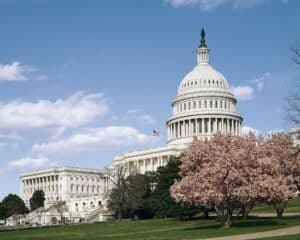Elizabeth Carlen, a Ph.D. candidate and former Clare Boothe Luce Graduate Fellow at Fordham University, recently published her research on East Coast urban pigeon populations, and her findings have gotten a lot of attention recently, having been featured in the New York Times and even referenced on Saturday Night Live.
Carlen works in the Munshi-South lab of the Biological Sciences department at Fordham University, which studies how cities influence the ecology and evolution of organisms. Her current work, on how urbanization has affected the evolution of feral pigeons in the Northeastern Megacity (Boston, MA to Washington, DC), has been featured on Saturday Night Live and led the New York Times to refer to her as the “Pigeon Stalker.”
In addition to her dissertation research, Carlen is a co-founder and editor of the urban evolution blog Life in the City: Evolution in an Urbanizing World. Before moving to New York City, she studied mammals in rural, suburban, and urban ecosystems, which led her to ask questions about how humans have influenced the distribution, genetic diversity, and interactions of species.
Almost one in five Americans lives in the megacity that is the Northeast, a sprawling cluster of paved surfaces, bitter sports rivalries and clashing opinions about which city’s drivers are rudest. Each city on the road up Interstate 95 from Washington, D.C., to Boston prides itself on its uniqueness. But it turns out parts of the animal world have their own senses of geography.
At the genomic level, a new study finds, most of the Eastern Seaboard’s pigeons are all mixed up. That means those birds shuffling through Central Park, clucking on the National Mall, hanging out in Baltimore’s Inner Harbor or getting chased down a Philadelphia back alley by Gritty? All one interconnected population, denizens of an unbroken avian super-metropolis.
Except New England pigeons, that is, which seem to keep to themselves.
After Elizabeth Carlen, a biologist at Fordham University, caught pigeons with a net gun and took their blood samples during a series of road trips across the region, she discovered that birds all the way from Virginia to southern Connecticut show genetic signs of interbreeding. And in a paper published this month in Evolutionary Applications, she and a co-author also report that another separate, distinct pigeon supercity begins in Providence, R.I. and continues to Boston.
“That was really weird to think about,” Ms. Carlen said. The suburbs of Connecticut don’t just mark the boundary between Yankees and Red Sox fans, or tomato-based and cream chowders: They also seem to block pigeons.





